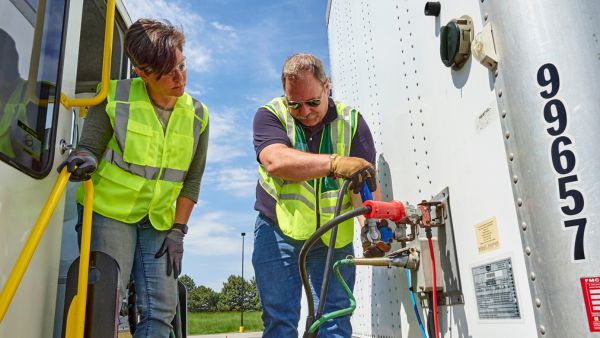Rev Up Driver Appreciation with a Best-in-Class Training Program

Highly skilled drivers are in short supply. Carriers investing in best-in-class training accelerate driver skill development and show appreciation. The investment in training results in the following:
- Improved driver retention,
- Lower crash rates,
- Fewer moving violations,
- Better Compliance, Safety, and Accountability Scores, and
- Decreased exposure to risk.
Driver retention has always been an Achilles heel for the trucking industry. Driver shortages and high turnover rates have been the norm for years. But driver retention will become an even more critical issue as driver shortages increase.
Bonuses, pay increases, and other rewards are used to attract drivers, but what can motor carriers do to separate themselves from the pack and not just attract — but retain — these drivers?
Best-in-class training can be the differentiator.
Why training?
Pay increases have a diminishing effect on retention over time, and any carrier can dangle attractive pay options as a hook.
Career and inexperienced drivers are looking for employers committed to their employees. Aren’t we all? This includes a commitment to a culture of safe and compliant operations. Compliance, Safety, and Accountability (CSA) scores matter to drivers, not just insurance companies.
A 2021 WorkHound survey found that almost 50 percent of the 2,000 drivers who gave anonymous feedback on training left their company.
An established and consistent training program demonstrates a commitment to keeping drivers’ skills sharp and safe operations. It shows prospective and current drivers that a company is serious about its culture of safety.
New-hire training
All drivers new to a carrier, from the individual fresh out of driving school to the veteran driver new to the motor carrier, should complete an appropriate driver training program at hire to:
- Understand carrier expectations,
- Correct improper techniques and unsafe habits, and
- Become familiar with administrative and operational procedures.
Why experienced driver training?
Consistent, recurrent training is vital to those drivers who have been with a carrier for at least one year.
Even the most experienced driver must regularly review regulatory requirements and defensive driving techniques. A review of defensive driving techniques reminds complacent drivers of the skills and habits needed to stay safe.
Career options for experienced drivers
Some of the best drivers leave their companies to improve themselves. An advancement program can improve driver retention.
Consider formalizing driver career path options such as:
Master driver trainer or mentor - Drivers who complete additional training and can also mentor drivers. Examples of training include:
- Defensive driving, including skid-pad skills, and
- Advanced driver assistance systems (ADAS) expert.
Driver trainer or yard trainer – Drivers familiar with company processes and possessing training skills but not at the Master Driver level. Training can be on-road or in the yard only.
Coaching/Corrective Action Training
Coaching sessions and corrective action training should also be conducted in addition to the regularly scheduled training. One-on-one sessions often triggered by an accident, incident, violation, or complaint aim to correct an individual driver’s issues.
Coaching and video-based training often do not remedy a skill or attitude issue. A highly skilled trainer that advanced due to the career path offered can affect positive behavior changes and correct skill deficiencies, reducing potential risk.
The bottom line
An established and consistent driver training program can foster a safety culture and be the best form of driver appreciation.
J. J. Keller® Safe and Smart driver-trainers can jumpstart carrier safety programs with a train-the-trainer curriculum to set up their team for success.